Things to do in Bordeaux often involve the region’s famous wine appellations. Lying in the southwest of France, near the Atlantic Ocean, Bordeaux conjures up images of rolling vineyards, serene chateaux, and clinking glasses of ruby-red wine.
Bordeaux is very much the France you see on nostalgic postcards, all chic cafés and elegant boulevards. There’s also cutting-edge architecture, an old quarter brimming with UNESCO World Heritage sites, and fabulous shopping opportunities to uncover.
From exploring its many museums to sampling the region’s famous wine, discover some of the best things to do in Bordeaux below.
Wander Historic Old Bordeaux
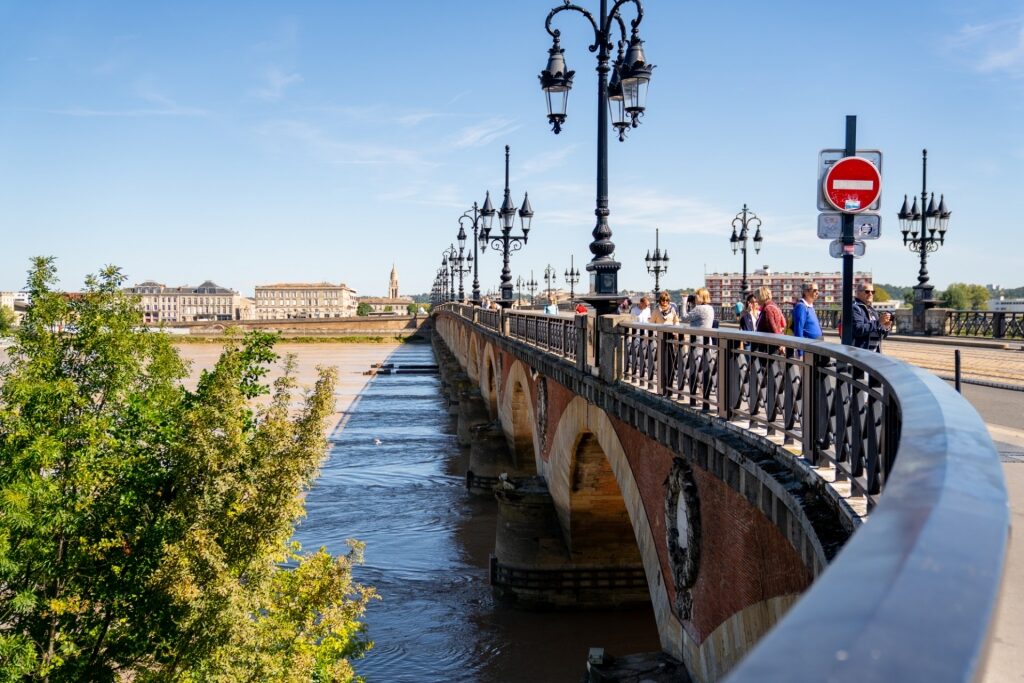
Pont de Pierre, Old Bordeaux
Cross the Napoleon-commissioned Pont de Pierre, the oldest bridge in Bordeaux, to reach this characterful quarter. Spread over a central area on the left bank of the River Garonne, Old Bordeaux consists of St. Pierre, St. Colombe, St. Michel, and St. Croix.
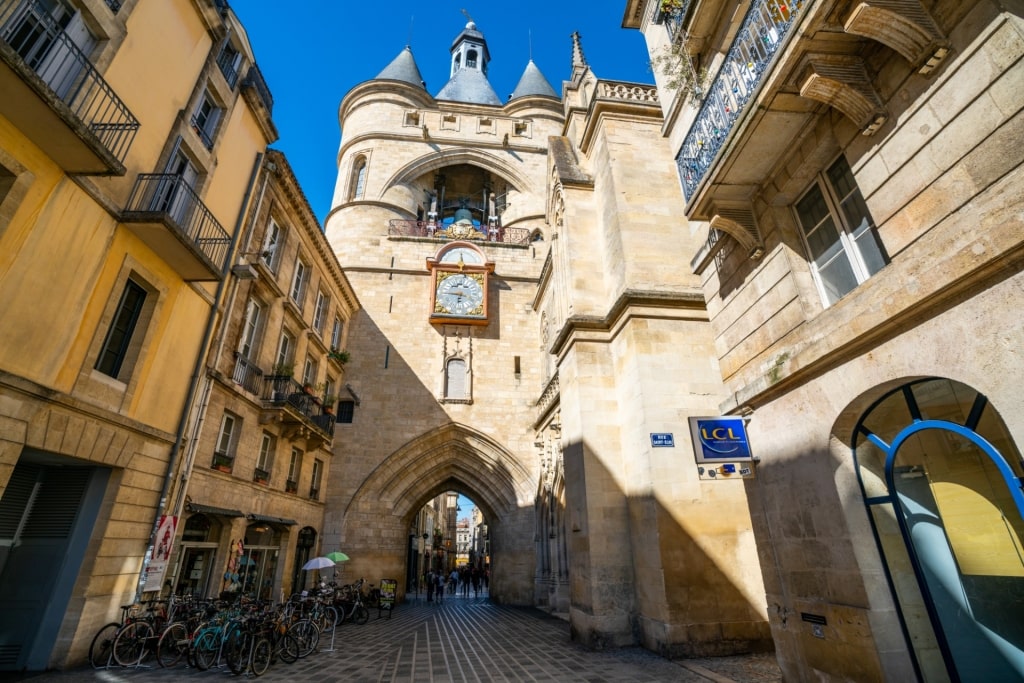
Porte Cailhau, Old Bordeaux
There are plenty of things to do in the old quarter to keep you occupied all day. Start by climbing to the top of the 15th-century Porte Cailhau, one of the city’s medieval gates that resembles a small fairytale castle. Porte Cailhau offers fantastic city views from 115 feet above the city.
Tour the Grosse Cloche, the Big Bell—ringing out to mark Bastille Day, V.E. Day, and other special occasions—and peek inside its eerie dungeons.

Saint-André Cathedral, Old Bordeaux
Visit Bordeaux’s Gothic Saint-André Cathedral, built between the 12th and 14th centuries. Admire its pearly twin spires, the freestanding bell tower, and the extraordinary collection of art and antiquities inside.
The nearby Saint Seurin Basilica is the oldest church in Bordeaux, originating in the 6th century, although it was added to in the 12th and 14th centuries. The Basilica of St Michael, meanwhile, has the tallest spire, standing at 374 feet.
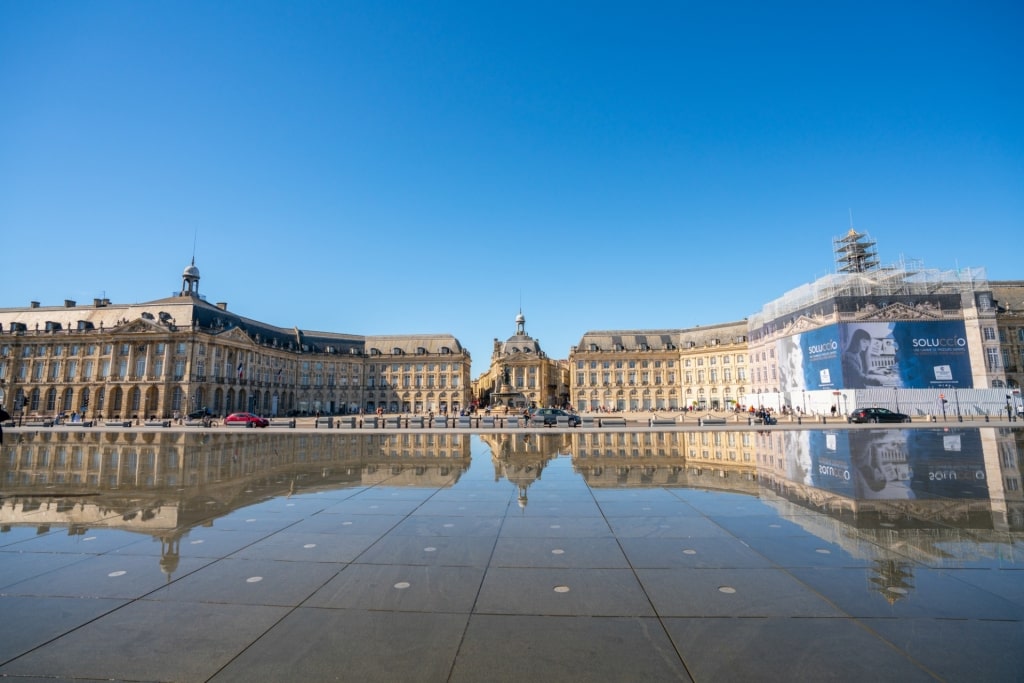
Miroir d’Eau, Old Bordeaux
Other historical French landmarks of Old Bordeaux include the Grand-Théâtre, with its imposing 17th-century stone columns, and the 18th-century Place de la Bourse, a wide-open square shimmering in the Miroir d’Eau, an enormous reflective pool opposite.
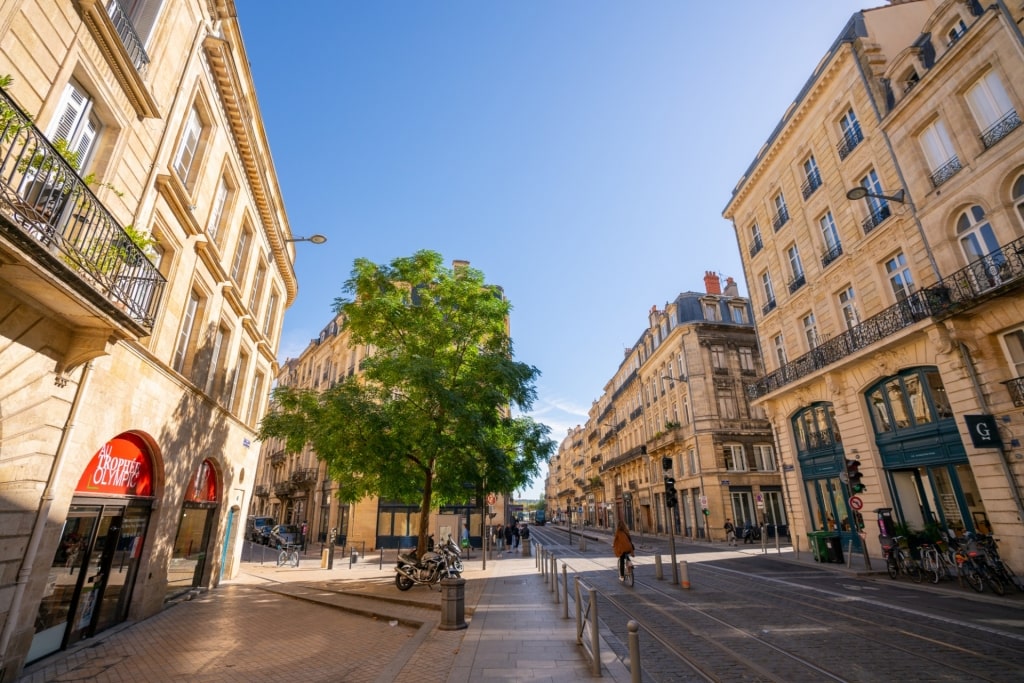
Old Bordeaux
Simply strolling the city’s lively streets, stopping for coffee or a glass of Cabernet Sauvignon, and browsing the many stores is one of the best ways to spend an afternoon in the city.
Spend a Day at the Seaside in La Rochelle
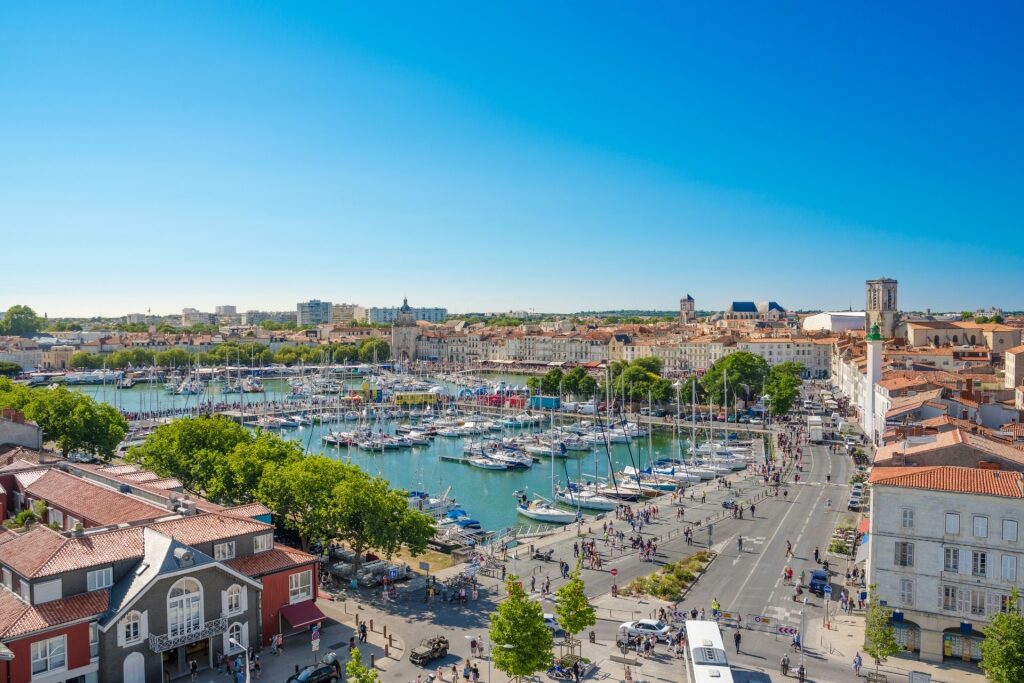
La Rochelle
The picturesque Atlantic town of La Rochelle, once known as France’s principal salt and wine trading port, makes for a compelling seaside day out.
Steeped in history, three 14th and 15th-century stone towers—once used to accommodate prisoners—watch over the Old Port. Climb the spire-topped Lantern Tower to take in La Rochelle’s terracotta rooftops and the glistening ocean views.
In the Old Town, discover the ancient arcade streets, with their delightful crooked buildings and period architecture that make La Rochelle one of the best walled cities in France.
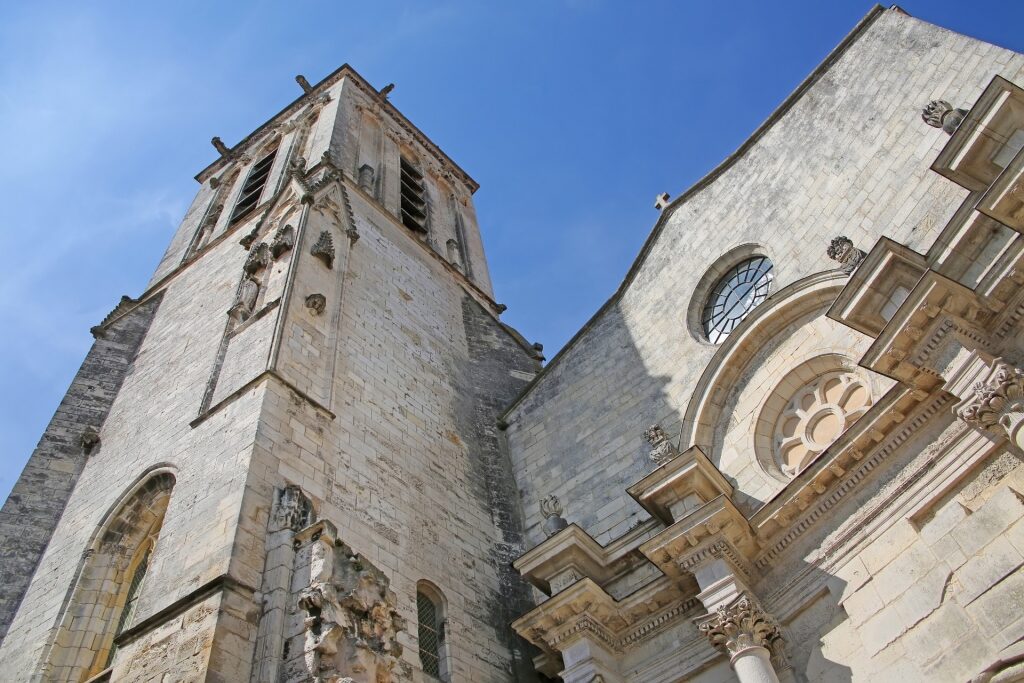
Saint Saviour Church of La Rochelle
Marvel at the Old Town’s beautiful religious landmarks, including the Cloister Of The White Ladies, Saint Louis Cathedral, and Saint Saviour Church of La Rochelle. Peek inside the cathedral to view the ceiling frescoes by artist William Bouguereau.
Once you’ve explored the alleyways and meandering streets, head back to the harbor for food and drinks. Savor a chilled Cremant de Bordeaux, the delicious sparkling wine of the Bordeaux wine region, at Bar André as you polish off a plate of rich Atlantic oysters.
Taste Gourmet Fare at Marché Des Capucins

Marché Des Capucins
Things to do in Bordeaux typically involve food, and the city’s belly is the vibrant Marché des Capucins, a covered market in the Saint-Michel neighborhood.
Jostle with locals over the market’s butchers, bakers, fresh fruit and vegetable stalls, chocolate makers, wine merchants, cheesemakers, and fishmongers.

Marché Des Capucins
Taste regional cheeses, cured meats, and fresh shellfish before picking out a selection of Bordeaux’s favorite patisserie: canelés, vanilla-flavored, rum-drenched, sweet pastries with a soft sponge center and caramelized crust.
From freshly baked croissants and a range of pâtés to seafood straight from the Atlantic Ocean, Marché des Capucins is a must-visit for the gourmet traveler in Bordeaux.
Shop on Bordeaux’s Rue Sainte-Catherine
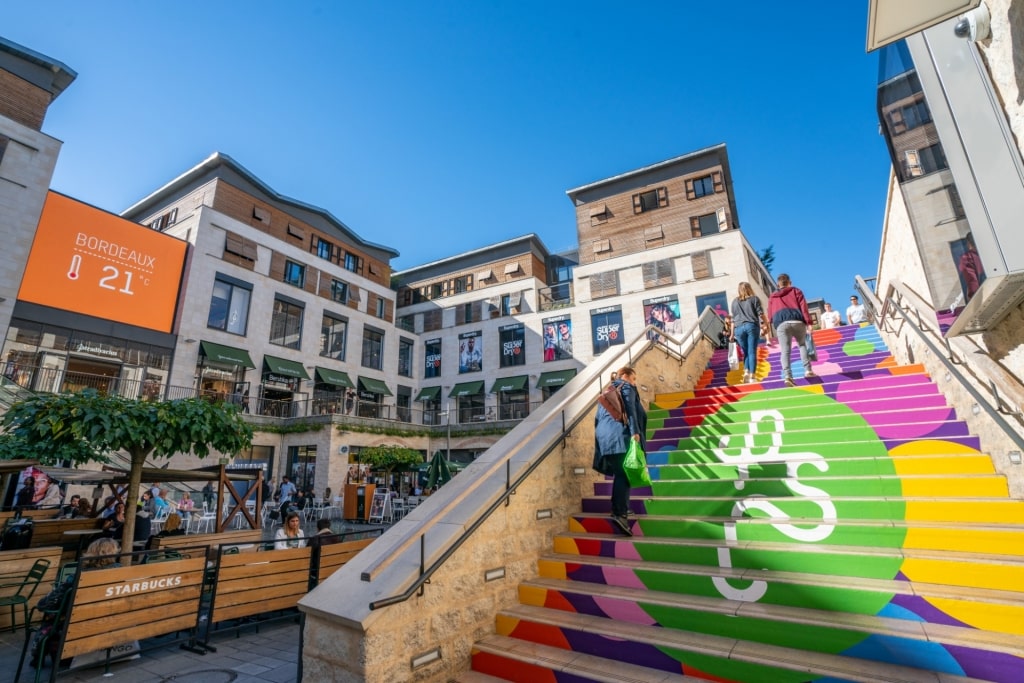
Rue Sainte-Catherine
Paris might have the Champs-Élysées, but Bordeaux has rue Sainte-Catherine, one of the best places to shop in France. Unlike Paris’s main shopping thoroughfare, however, rue Sainte-Catherine is pedestrianized, cutting through the city’s historic quarter with a mix of designer, big brand, and independent stores.
Browse chic French brands Sandro, Gérard Darel, and Soeur at the department store Galeries Lafayette.

Canelé
The immaculate Promenade Sainte-Catherine offers a mix of food outlets and international brands over two stories around a central open-air courtyard.
For a thoughtful gift to take home, pick up copper canelé molds from the divine Maison Baillardran, and treat yourself to a selection of sweet treats as you shop.
Enjoy a Day Trip to Cognac
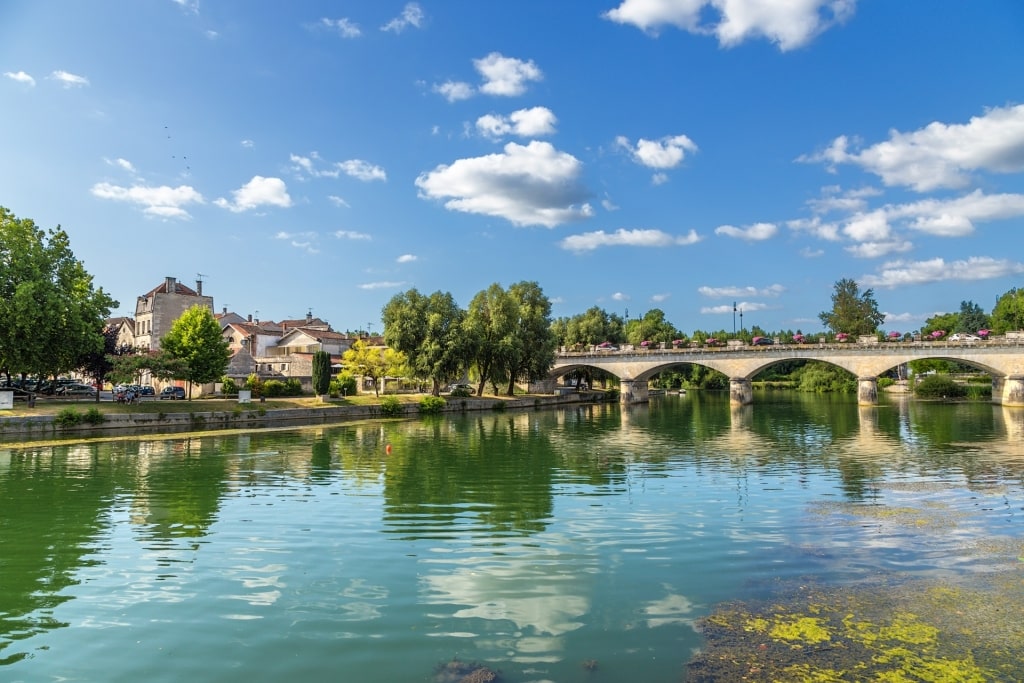
Cognac
The charming commune of Cognac, home of the silky brandy that bears its name, lies midway between La Rochelle and Bordeaux.
Cognac is surrounded by the region’s rolling green vineyards, while the town is home to winding cobbled streets filled with centuries-old buildings that France is known for.
Enjoy morning coffee on Place François 1er and check out the kaleidoscope of fresh produce at Place d’Armes, Cognac’s covered market.
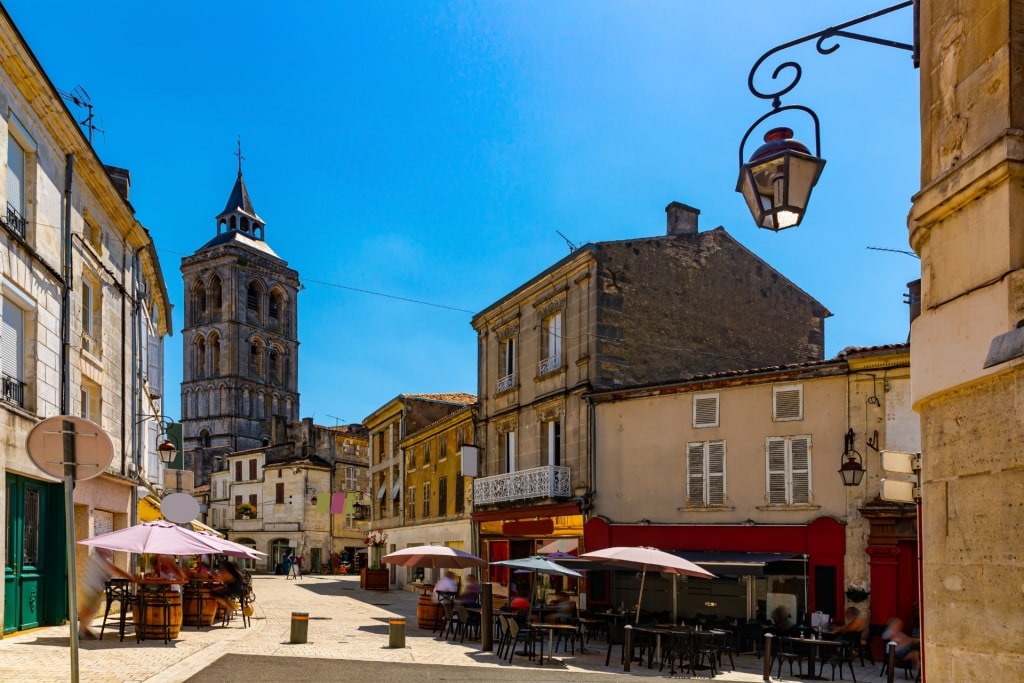
Cognac
Wander the beautiful old quarter between Saint-Léger church and the River Charente, which runs through Cognac. The ancient streets are filled with boulangeries, chocolatiers, bistros, and bars.
Admire the pretty shuttered houses and browse local boutiques as you stroll to the 10th-century Château de Cognac, on the banks of the river.

Château de Cognac, Cognac
You could visit one of the big four distillers—Hennessy, Martell, Rémy Martin, and Courvoisier—for a tour and tasting session. Alternatively, opt for a tour of Château de Cognac’s cellars to understand the backstory of the French castle and taste the varieties of its amber-hued drink.
Sip Wines at La Cité du Vin

La Cité du Vin
Bordeaux is the largest, oldest, and, arguably, most respected wine-producing region in the world, so sipping on a selection of prestigious wines is something you can’t miss here.
Châteaus Cordeillan-Bages, Margaux, and Mouton Rothschild are among the biggest names in Bordeaux wine, but at the jaw-dropping La Cité du Vin—a museum dedicated to wine with tasting rooms and restaurants—you can sample an array of wines from the region and beyond.
The striking building was designed by architects Anouk Legendre and Nicholas Desmazières of Paris’ XTU Agency in a curving, futuristic style.

Bordeaux wine
Visitors can learn about the history of wine at the permanent exhibition, while the eighth-floor Belvedere is the place to take in views reaching across Bordeaux and sample the local vintages.
La Cité du Vin also has a program of concerts, screenings, lectures, and a boutique where you could pick up a range of gifts, including objects for the home, books, wine-related items, and gourmet treats.
Once you’ve explored the exhibitions and browsed the gift shop, feast on dishes at La Cité du Vin’s sophisticated Restaurant Le 7. Opt for the sublime white asparagus with matured comté cheese and roasted pistachios, paired with a wine recommended by the sommelier.
Read: Best Wine Cruise Destinations for Oenophiles
Discover Exceptional Museums
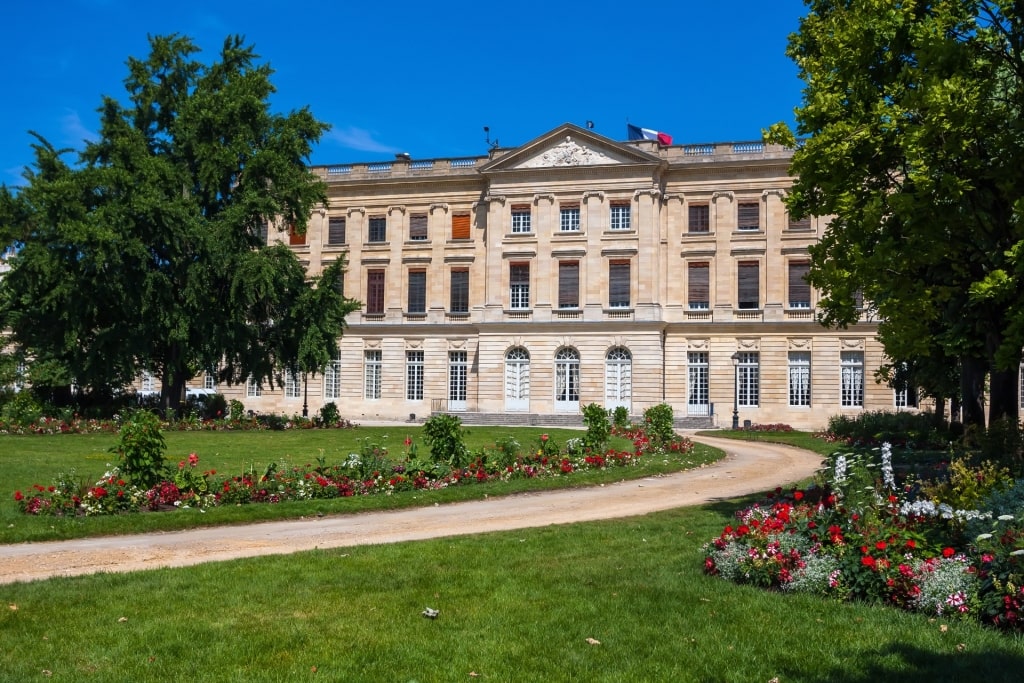
Bordeaux Museum of Fine Arts
If you’re thirsty for a day of culture, visiting Bordeaux’s outstanding museums is time well spent. Not only do they contain fascinating collections of art, antiques, and artifacts, but they’re housed in magnificent buildings.
The resplendent Bordeaux Museum of Fine Arts, located on the edge of Jardins de la Mairie, showcases wall-to-wall collections of paintings, sculptures, and drawings from the 15th to the 20th century. Browse works by some of Europe’s most prominent artists, including Chardin, Delacroix, Van Dyck, Le Pérugin, Matisse, Picasso, and Renoir.
The Museum of Contemporary Art in Les Chartrons explores the works of modern artists, including Christian Boltanski, Keith Haring, Richard Long, and Max Neuhaus.
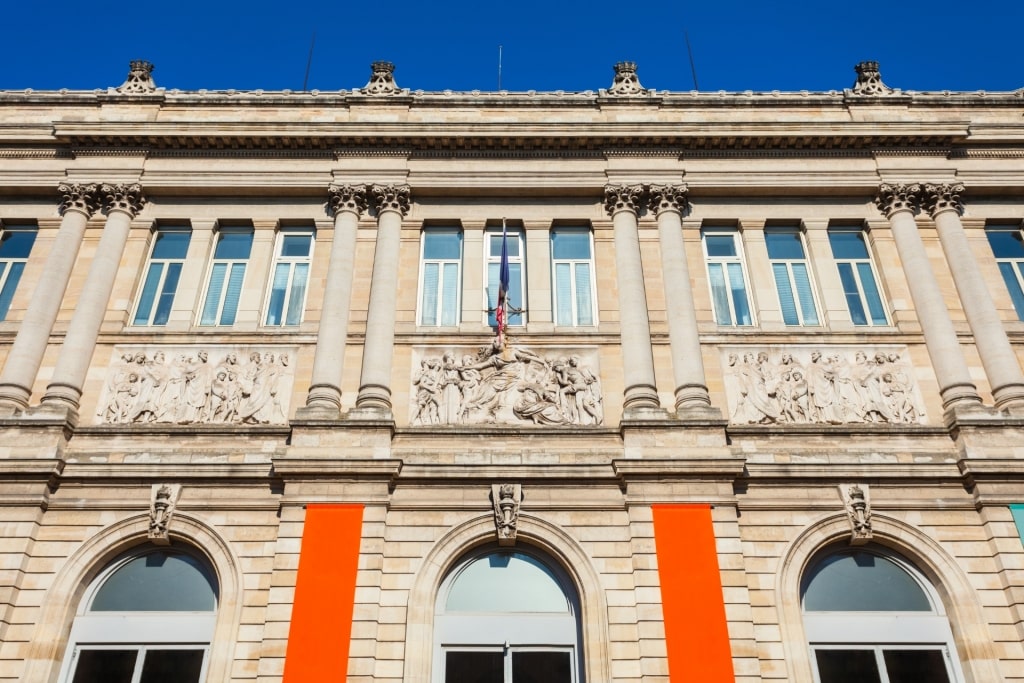
Museum of Aquitaine
For a history lesson on Bordeaux, the Museum of Aquitaine traces the city’s past from prehistory through to the present day. Wander the exhibitions to explore artifacts, texts, portraits, and statues.
The 16th-century tomb and cenotaph of Michel de Montaigne, a Renaissance writer and philosopher, are a highlight of the Museum of Aquitaine.
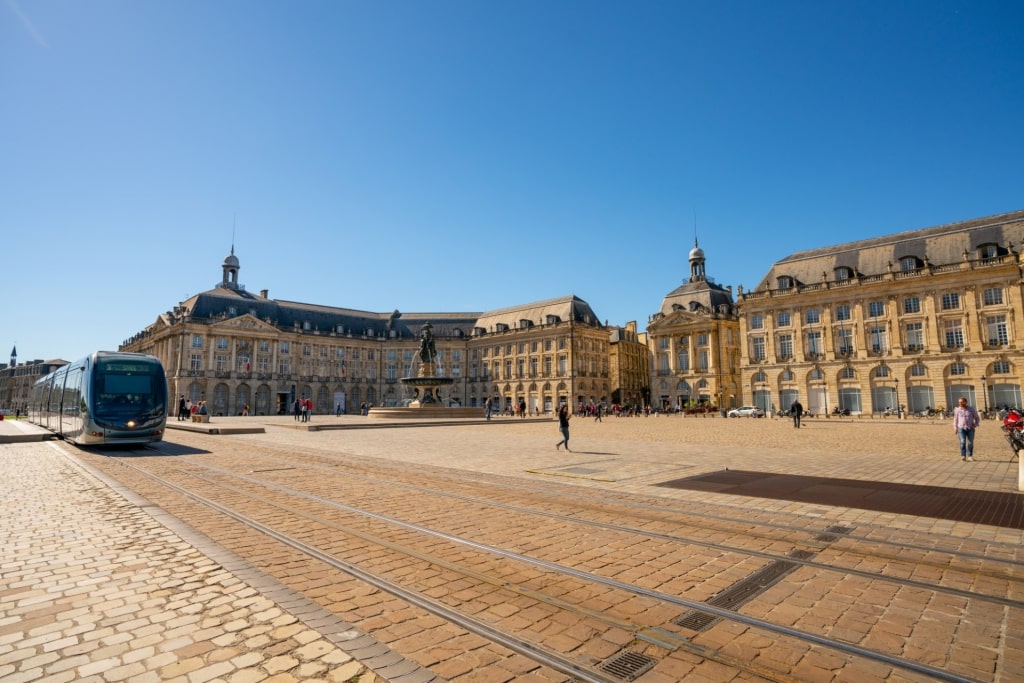
National Customs Museum
Bordeaux’s National Customs Museum, set on the spectacular Place de la Bourse, charts the history of French customs, while Musée Mer Marine, just around the corner from the Cité du Vin, reflects on the region’s maritime heritage. Atlases, model ships, drawings, maps, and navigational equipment are on display.
Relax in Bordeaux’s Bucolic Public Garden
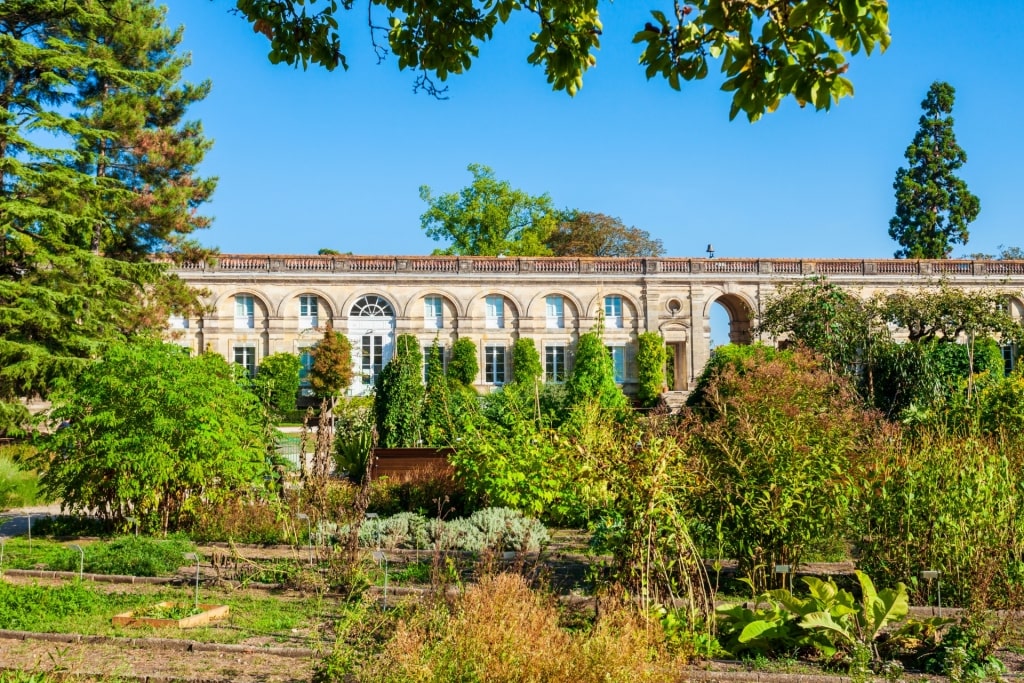
Public Garden
Established in 1746, just a pebble’s throw from the river, Bordeaux’s family-friendly Public Garden is home to the Natural History Museum, a puppet theater, playgrounds, and a large pond.
The park spans almost 27 acres, and visitors can wander among the horse chestnut, Italian stone pine, Lebanese cedar, English walnut, and tulip trees.
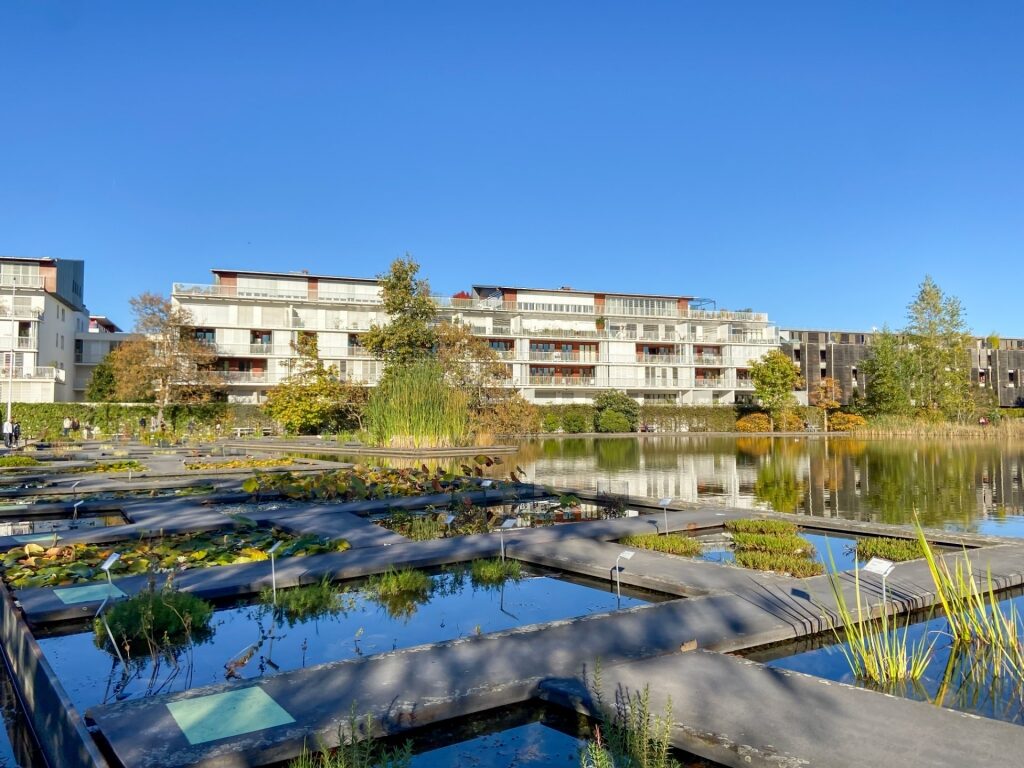
Botanical Gardens
The old-fashioned-style merry-go-round is enchanting to watch, while the city’s original Botanical Gardens (a newer botanical garden lies across the river), opened in the 1850s, is home to 209 flower beds.
Enjoy a boat ride on the pretty pond followed by a picnic of delicious local produce, including a selection of charcuterie, cheese, and fresh bread, picked up on rue Fondaudège, to the southwest of the park.
Explore Château de la Roche Courbon

Château de la Roche Courbon
Lying a one-hour drive south of La Rochelle and roughly 90-minutes north of Bordeaux, between Saintes and Rochefort, Château de la Roche Courbon is a beautiful castle and sumptuous gardens.
La Roche Courbon took its present shape in the 17th century when the Courbon family transformed the existing castle on the site into a magnificent chateau, featuring a Mansard-style roof design, four towers, and a large keep.
The imposing chateau has been abandoned and restored over the centuries and continues to be privately owned, though it is open to the public.

Château de la Roche Courbon
Join a guided tour of the castle and gardens to make the most out of your visit. Explore the ornate period architecture and interiors, including sculptures and a vast collection of art.
The formal gardens—listed as one of the Notable Gardens of France—are a masterpiece of landscaping, with exquisite topiary, statues, an orchard, flower garden, geometric flower beds, and lawns surrounding a lake.
La Roche Courbon’s permanent exhibition traces the chateau’s history, revealing ancient caverns that weave beneath the grounds and the mammoth restoration works that took place in the 20th century.
Cycle Around the City
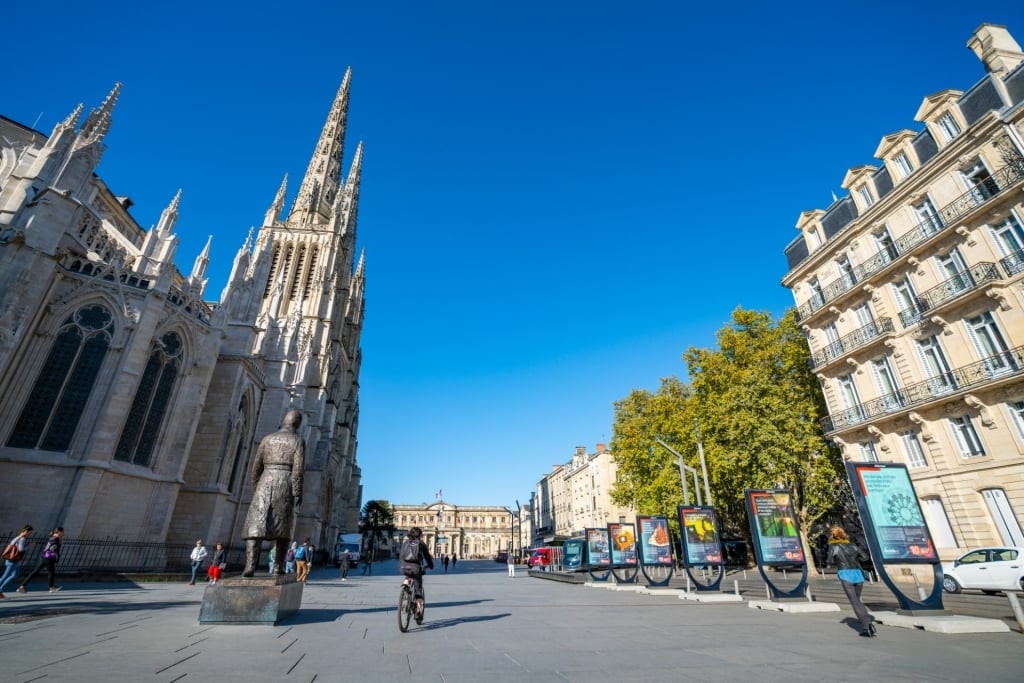
Bordeaux
Lace up your sneakers to cycle around Bordeaux. With 734 miles of cycle paths in and around the city, lush parks, and many central attractions clustered close together, Bordeaux is a wonderful city to explore on two wheels. More to the point, it’s flat.
Bordeaux’s V3 is a network of 186 bike stations, with around 1,000 electric and 1,000 manual bikes available for rent.
Opt for a loop of the wide River Garonne, cycling along the scenic and leafy right bank to the modern Chaban-Delmas Bridge to reach the left bank. Follow the river south through the buzzy Chartrons neighborhood to Old Bordeaux, where many of the city’s most significant landmarks are.
The right bank boasts the leafy Parc aux Angéliques with a selection of riverside cafés and restaurants to enjoy drinks and a bite to eat, along with some of the best views of Bordeaux.
Drive to the Ancient Town of Saintes
A colossal Gallo-Roman amphitheater once dominated the western fringes of Saintes, a medieval city with a village-like old town in western France.
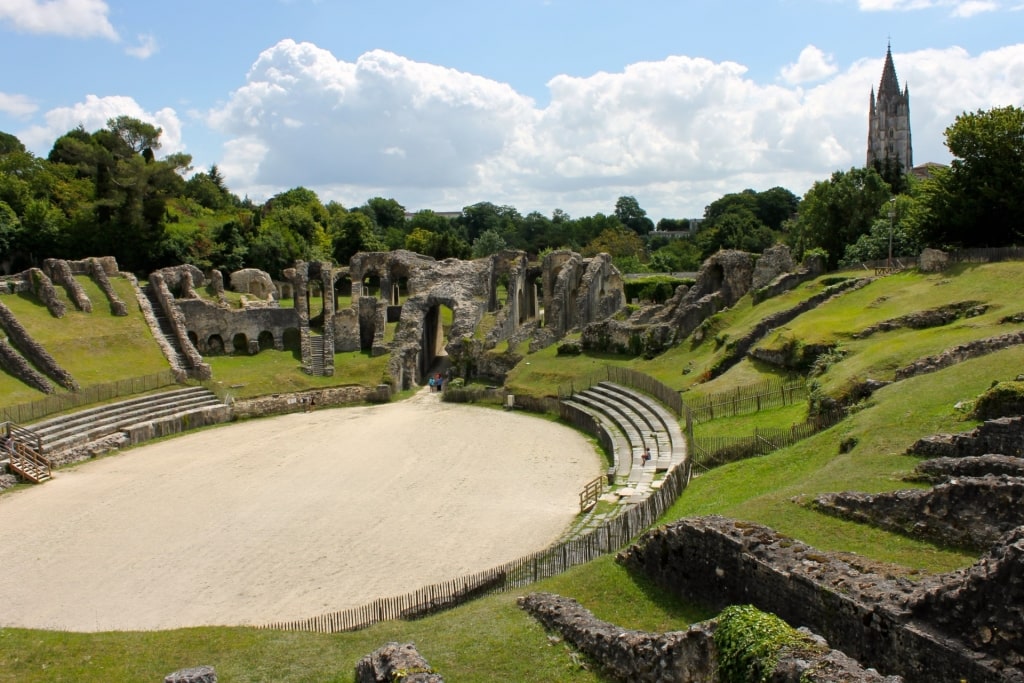
Saintes Amphitheater
A remnant of the Roman Empire, the town’s amphitheater once saw thousands of spectators pile into its stands to watch gladiator fights, animal hunts, and other forms of “entertainment” of the day.
Centered around the River Charente, Saintes is a walkable city and perfect for exploring on foot. The pedestrianized center is dotted with ancient churches, interesting museums, and cute cafés.
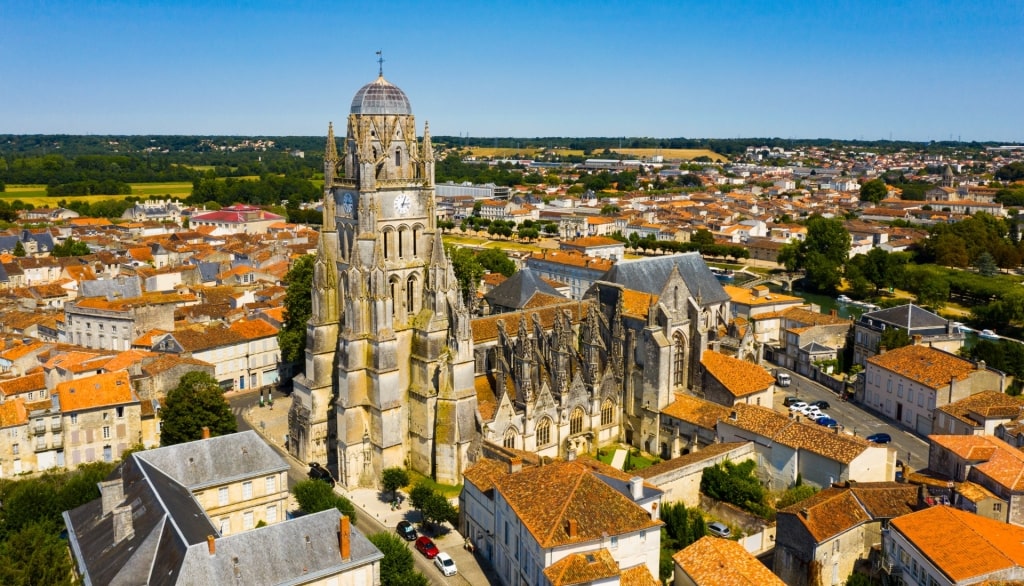
St. Peter’s Cathedral, Saintes
From the amphitheater, walk to the 15th-century St. Peter’s Cathedral, with its elaborate but unfinished tower, topped with a domed bell that can be seen from afar, towering above the city.
Browse the city’s Museum Échevinage, housed inside the beautiful former town hall, where you can view paintings, sculptures, ceramics, and Sèvres porcelain ranging from the 15th to the 20th century.
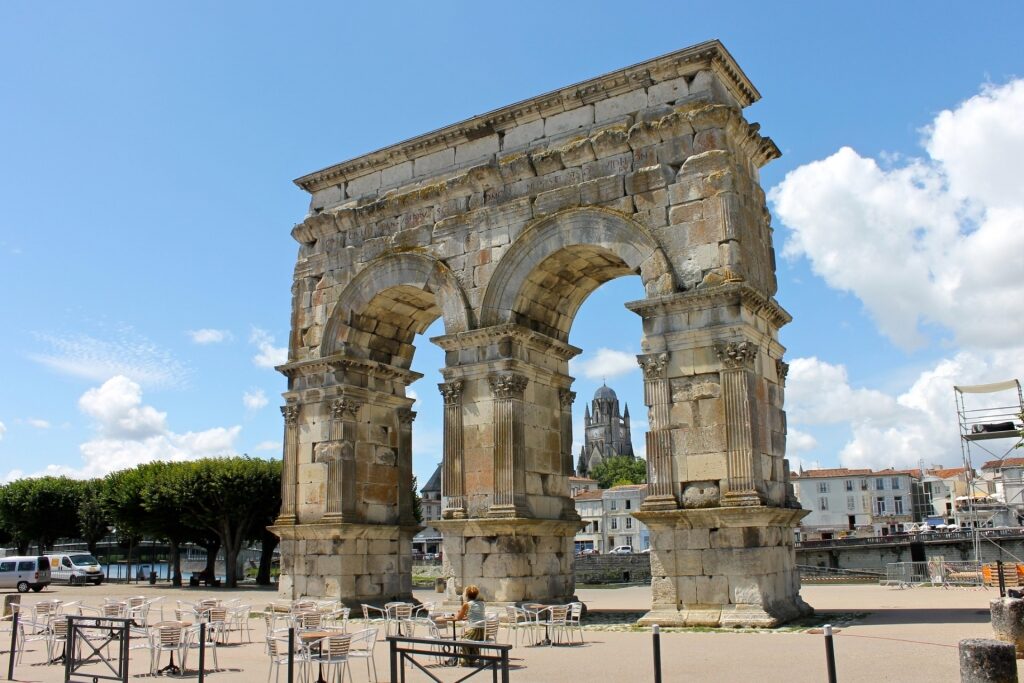
Arch of Germanicus, Saintes
Cross the river to the striking Arch of Germanicus, a 2,000-year-old Roman structure consisting of two arches, before taking in the relics of the city’s Archaeological Museum.
Take a Wine Tour
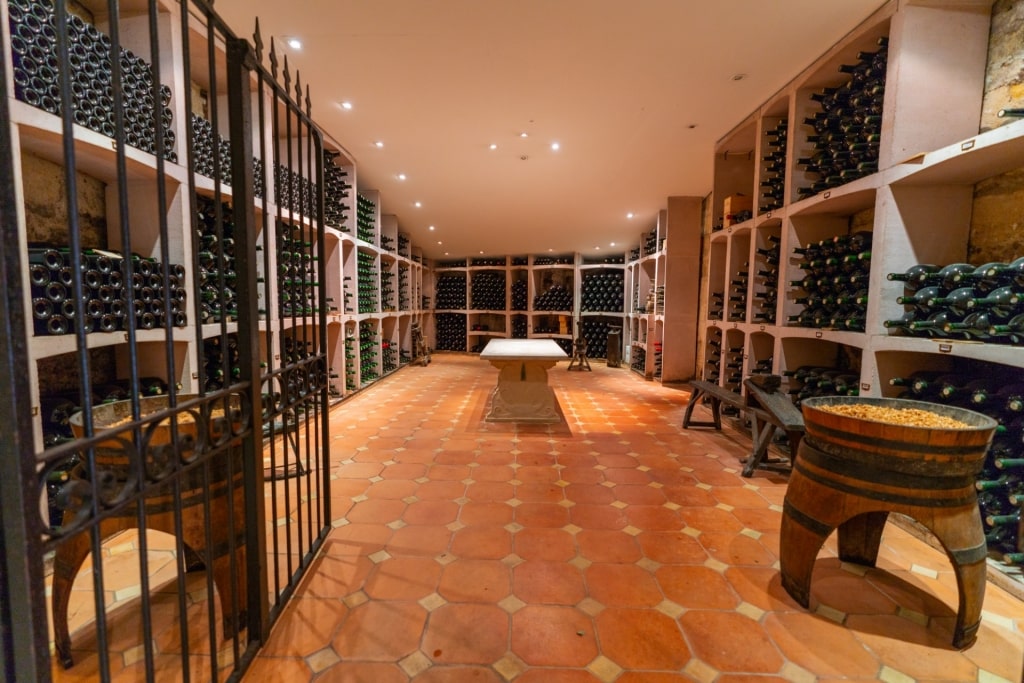
Bordeaux wine
While the French museum of La Cité du Vin offers a great overview of the region’s wines, if time allows, getting out and about in the surrounding countryside is a different way to appreciate the various appellations of Bordeaux’s wine country.
The first thing to note is that it’s incredibly vast, stretching out for 60 miles around the city itself and taking in the three waterways, the Gironde, Garonne, and Dordogne that make up Europe’s largest estuary and help produce the ideal conditions for viticulture.
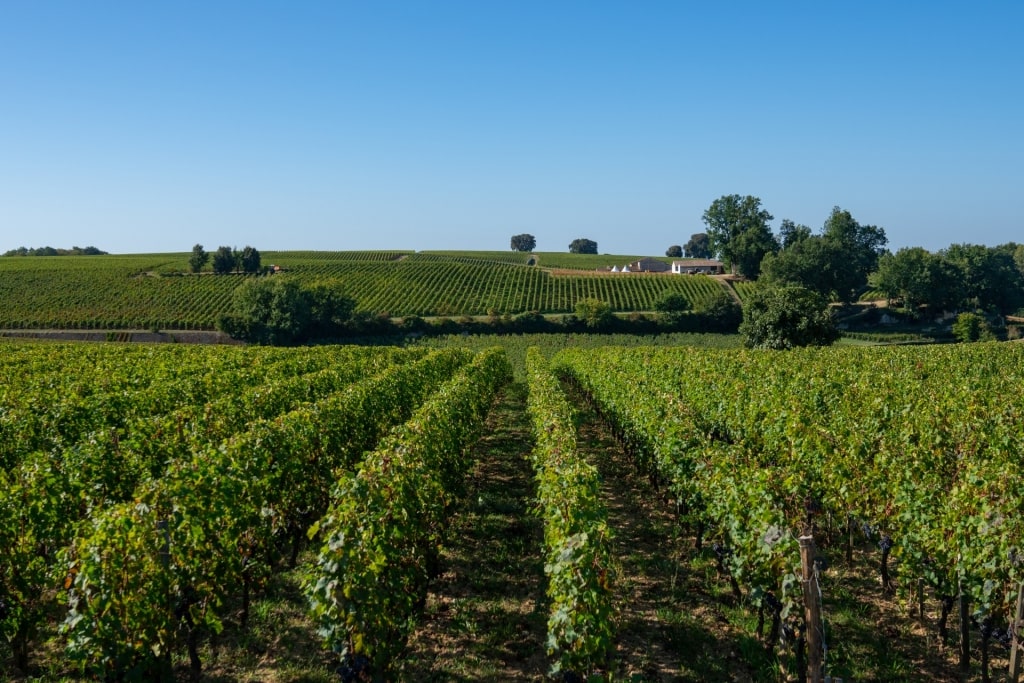
Vineyard in Bordeaux
The region is divided into the left and right banks of the Gironde estuary and each of these are also divided into sub-regions. These in turn are separated into smaller regions to produce a dizzying 50 appellation d’origine contrôlée, or AOCs, as they are known.
They have, of course, to pass the taste test and so jumping on a tour with a knowledgeable guide to drive around the rolling hills, wide rivers, and elegant château mansion houses is simply the best way to find a favorite.
Look out for legendary growers such as Margaux and Mouton Rothschild, but also lesser-known offerings such as Château Citran on the left bank.
Cruise the Garonne
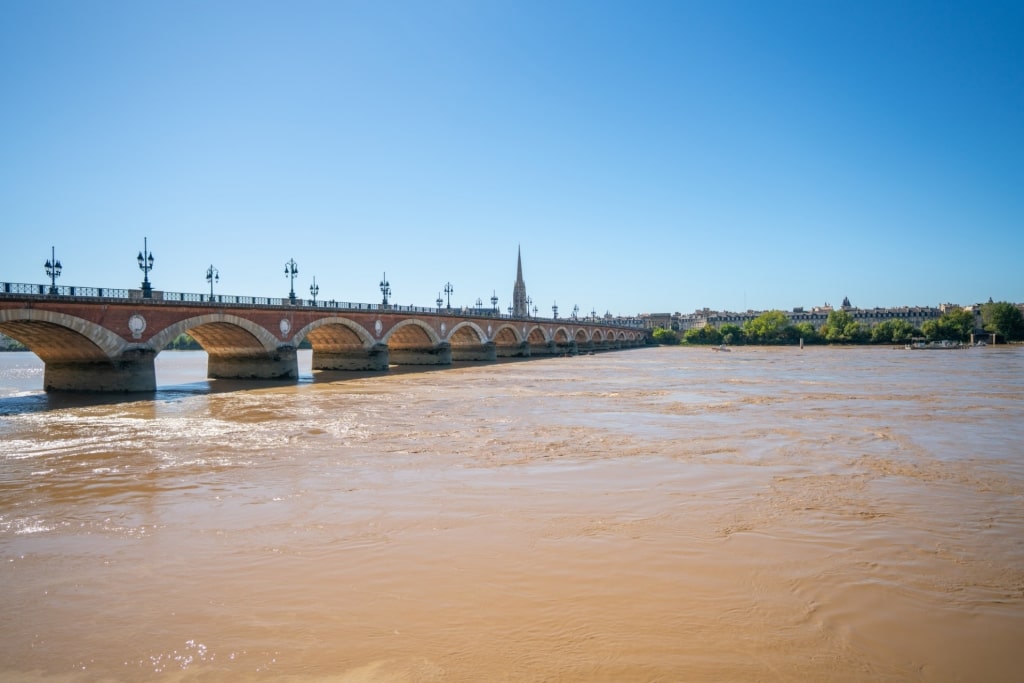
River Garonne
Flowing over some 330 miles from the peaks of the Spanish Pyrenees to its emptying into the Atlantic north of the city, without the Garonne River, there would be no Bordeaux.
The region was first settled by Celtic nomads around 300 BC with the city eventually formed here going through several golden eras that would define its future. Arguably the most notable was the “English era” from the 12th to the 15th centuries when Eléonore, Duchess of Aquitaine, married Henry II of England.
The city’s tax-free status with England saw it flourish as a port with much of Europe’s trade in coffee, cocoa, sugar, cotton, and, of course, wine flowing through its docks.
This history can be enjoyed in more depth on a river cruise that sails past some of the more than 300 illustrious monuments in the city and under the many bridges that span the river.
Dine at the City’s Best Restaurants
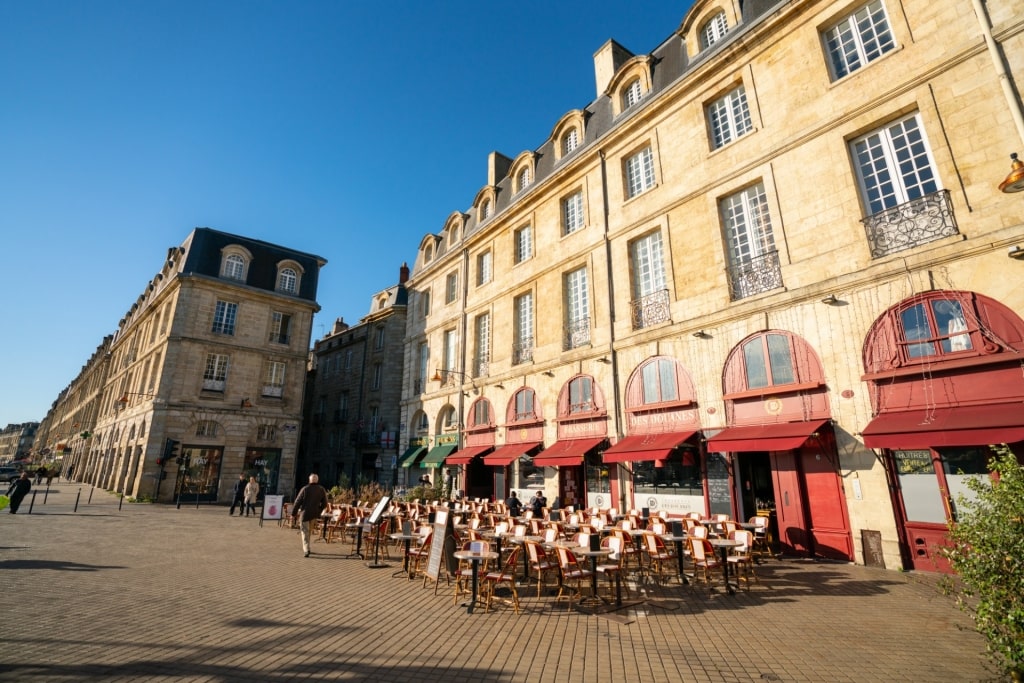
Restaurant in Bordeaux
As with many world-class wine-growing regions, wine goes hand-in-hand with food in Bordeaux. Local specialties are wide and varied.
Look out for Sel de Château (red wine-infused sea salt), Bordeaux lamprey (a river fish cooked in red wine), and Aquitaine caviar. Then there are Arcachon oysters, Canelé sweet pastries, and L’entrecôte bordelaise (Bordeaux-style steak).
Dining options are equally broad. Local brasseries abound with Awake – Le Noubeau Bio, Le Noailles and Le Palatium being excellent affordable downtown offerings.
At the higher end of the scale, the city and its surroundings are home to 19 Michelin-starred restaurants. These include Le Pressoir d’Argent in the city center’s Intercontinental Hotel and La Table de Pavie in the elegant Hôtel de Pavie over in nearby Saint-Emilion, one of the best small towns in France.
See the Sculptures in Place des Quinconces
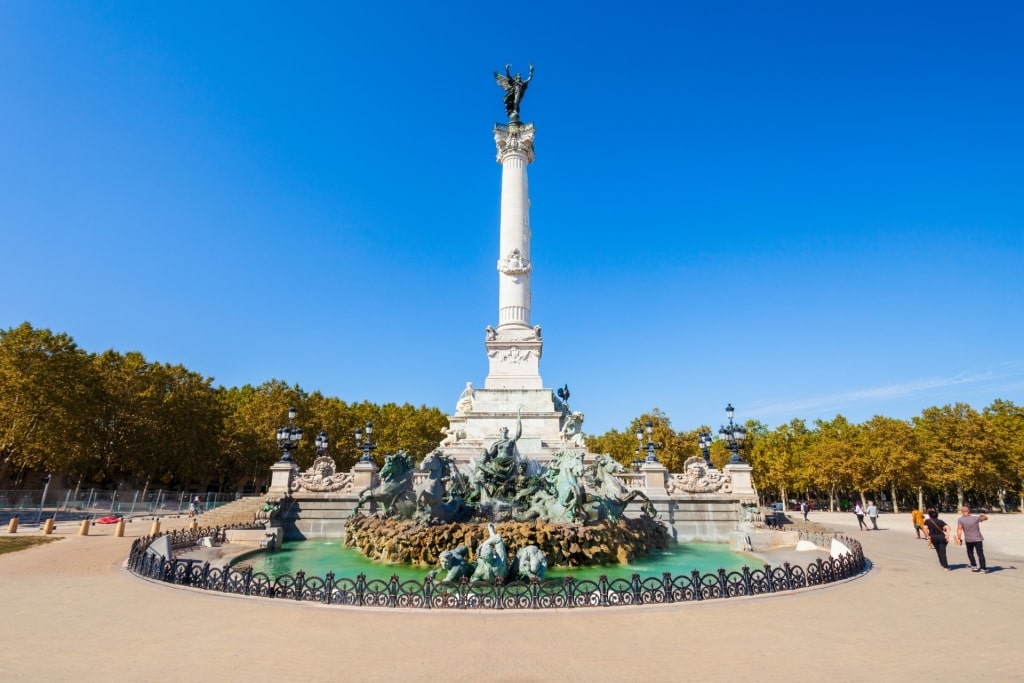
Place des Quinconces
One of Europe’s largest city squares, Place des Quinconces is a relaxed spot to idle away the hours with a spot of people watching. But it was not always this way.
When the square was built in the early 19th century, it was constructed as a place in which rebellion could be quelled. This was the one location where the city’s guns faced inwards towards the population of the Left Bank rather than towards the river.
To the west of the square is the Monument aux Girondins, a towering, sculpted column overlooking a fountain erected between 1894 and 1902 to honor those who fell in the French Revolution.
There are also two 69-foot rostral columns that face the river, one to symbolize commerce, with the other standing for navigation.
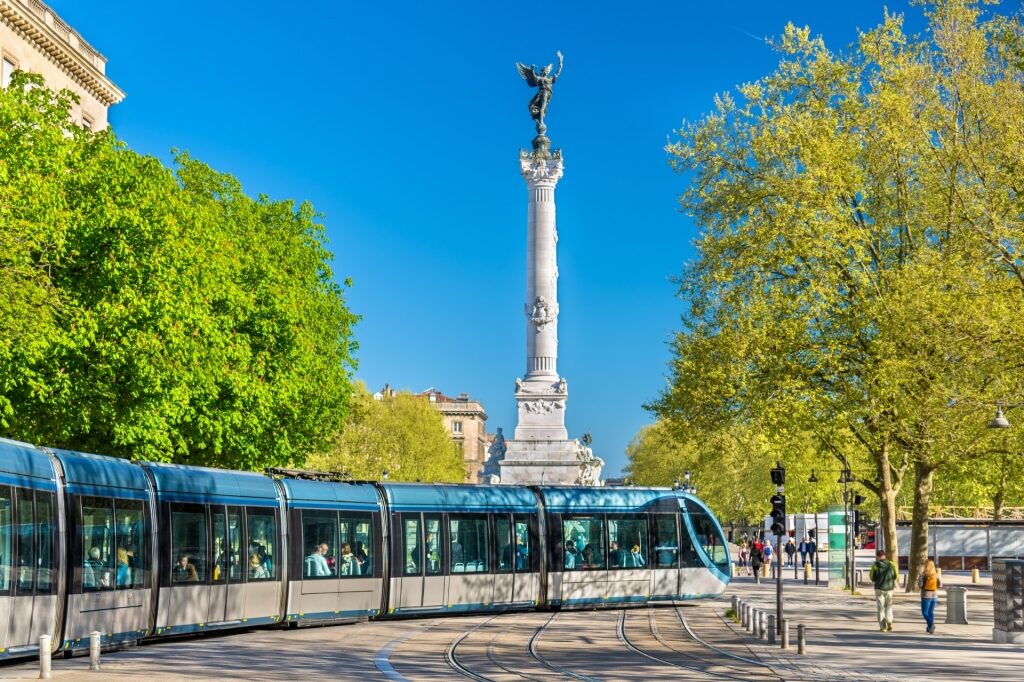
Tram in Place des Quinconces
In turn, these are also home to two white marble statues of Renaissance philosopher Michel de Montaigne and 18th-century political philosopher Charles de Secondat.
As well as its relaxed nature, Place des Quinconces plays a unique role in the city’s transport infrastructure as an interchange between Bordeaux’s three tram lines.
Climb the Dune of Pilat
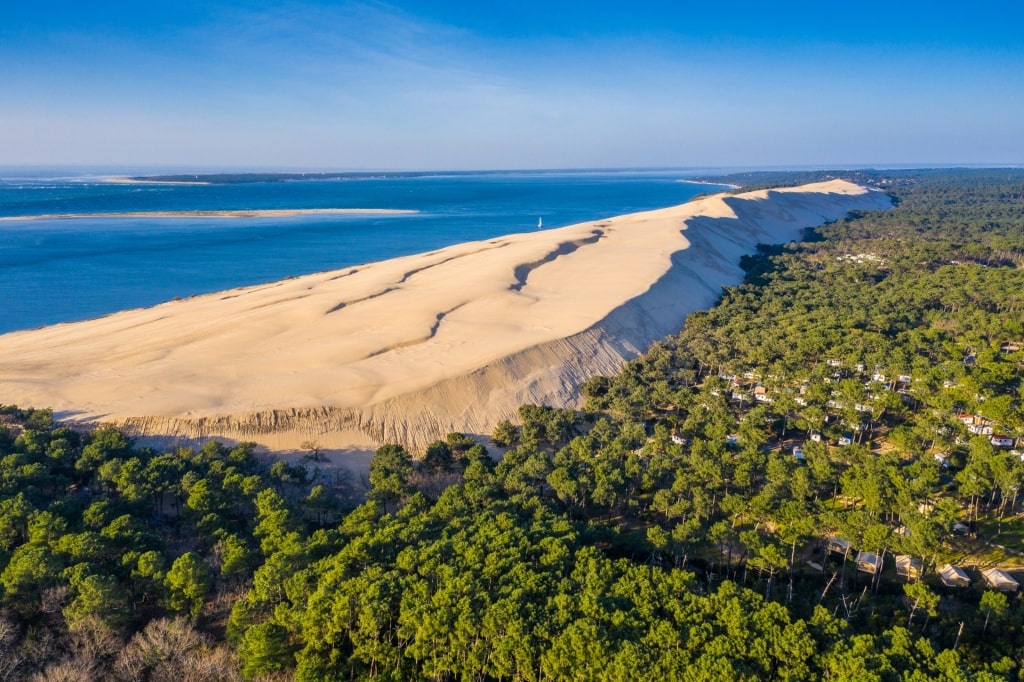
Dune of Pilat
With Bordeaux offering so much to do in the city center itself, it’s easy to forget that it is also the gateway to some incredible spots along France’s Atlantic coast.
Case in point is the Dune of Pilat, which lies an hour’s drive southwest of the city just outside the seaside town of Arcachon, which is famed for its oysters.
At almost two miles long and 1,600 feet wide, the dune is the largest in Europe and one of the coast’s premier sights. Some two million people a year come simply to visit this vast wall of sand.
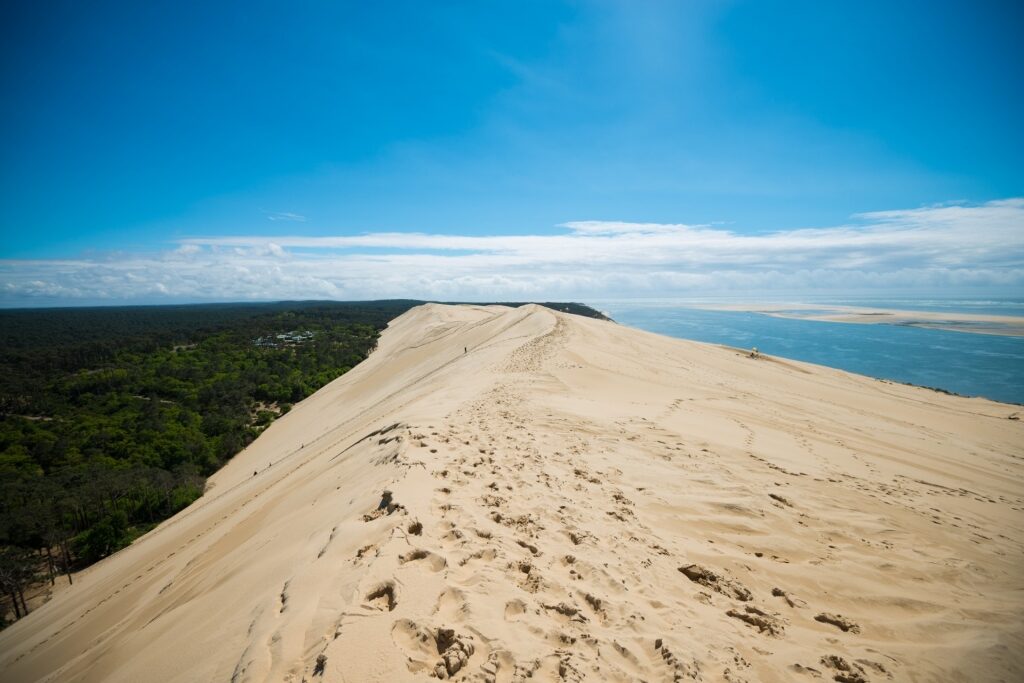
Dune of Pilat
Climbing to the top is no mean feat given that it’s 300ft above sea level and built on shifting sands, but alongside the badge of honor come fine views of Arcachon Bay and the surrounding forests on the land side.
Look out, too, for incredible displays of paragliding. The dune’s height and prevailing winds make it a choice location for those taking part in the daring sport.
Visit the Basilica Saint-Michel
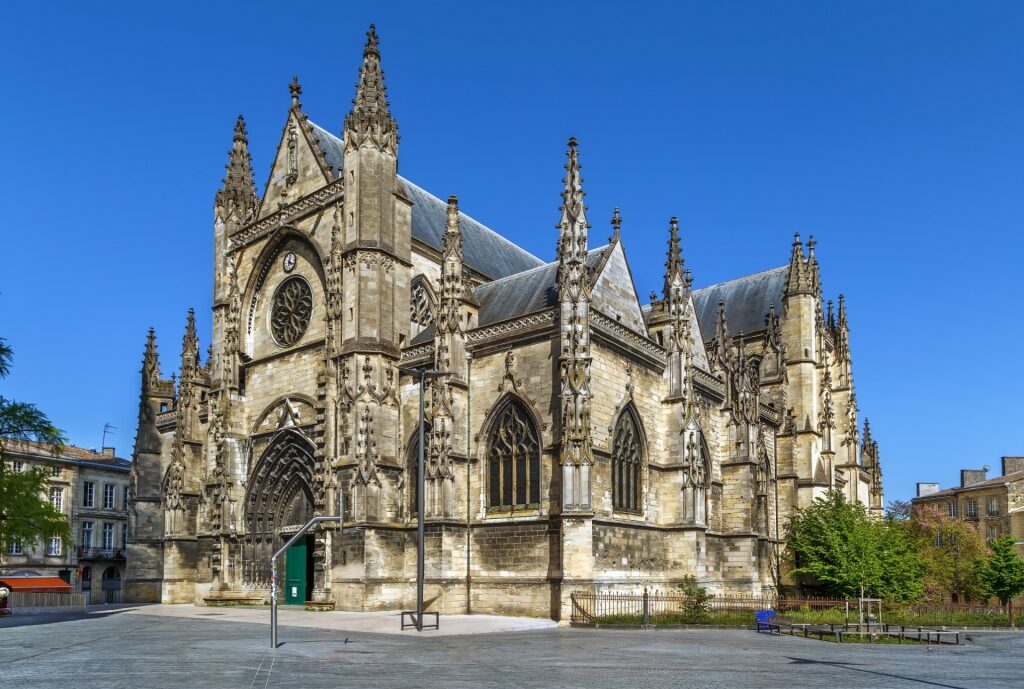
Basilica Saint-Michel
Part of the famed Routes of Santiago de Compostela pilgrimage trail, this ornate church was built in the flamboyant Gothic style between the 14th and 16th centuries and is one of the city’s many religious icons.
The church is set in the heart of the Saint-Michel quarter. Its interior is characterized by gracefully arched ceilings and an impressive pulpit that represents St. Michael slaying the dragon, as told in Revelation 12:7-9. Sadly, the stained glass in the church’s windows was destroyed in a World War II raid and is no longer the original.
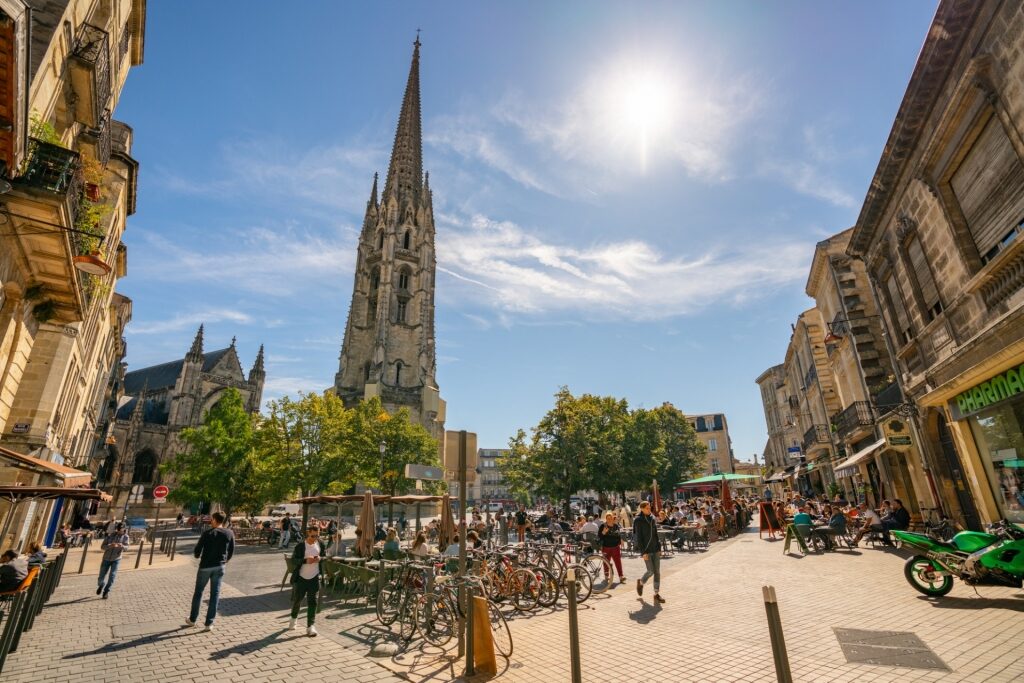
Basilica Saint-Michel
In a separate building adjacent to the church is a 375-foot bell tower that can be climbed during summer in France for excellent city views, while a market is held under its spire on Mondays and Saturdays.
See Exotic Plants in the New Botanical Gardens
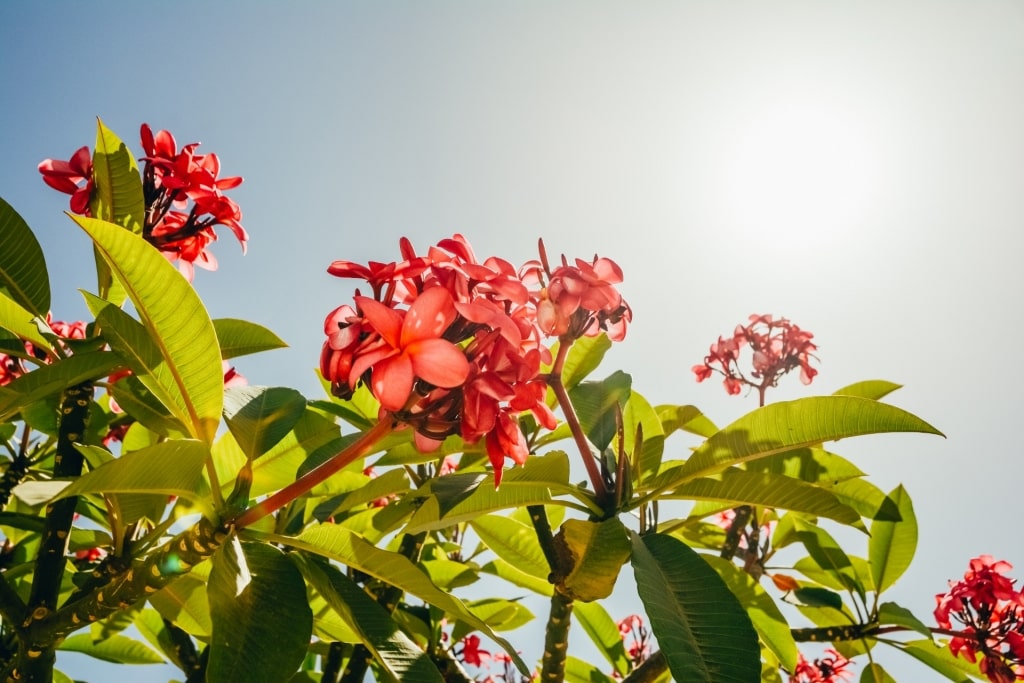
Exotic plant in Bordeaux
The city’s left and right Banks have a long-standing rivalry, with the left traditionally being considered the more historic and elegant of the two. Much of that changed in 1997 when it was decided to build the city’s new botanical gardens, a project that kicked off a regeneration of La Bastide, the right bank’s historic district.
The garden’s early success was partly based on its riverside location which offers outstanding views of Old Bordeaux across the water, but it has since gone on to be a popular attraction in its own right.
The garden is home to six different sections and 44 plots on a neighboring field with parts of it dedicated to preserving the local flora and others offering more exotic plants. There’s also a fine water garden, magnificent greenhouses and a vast arboretum.
Take a Stroll Around Parc Bordelais
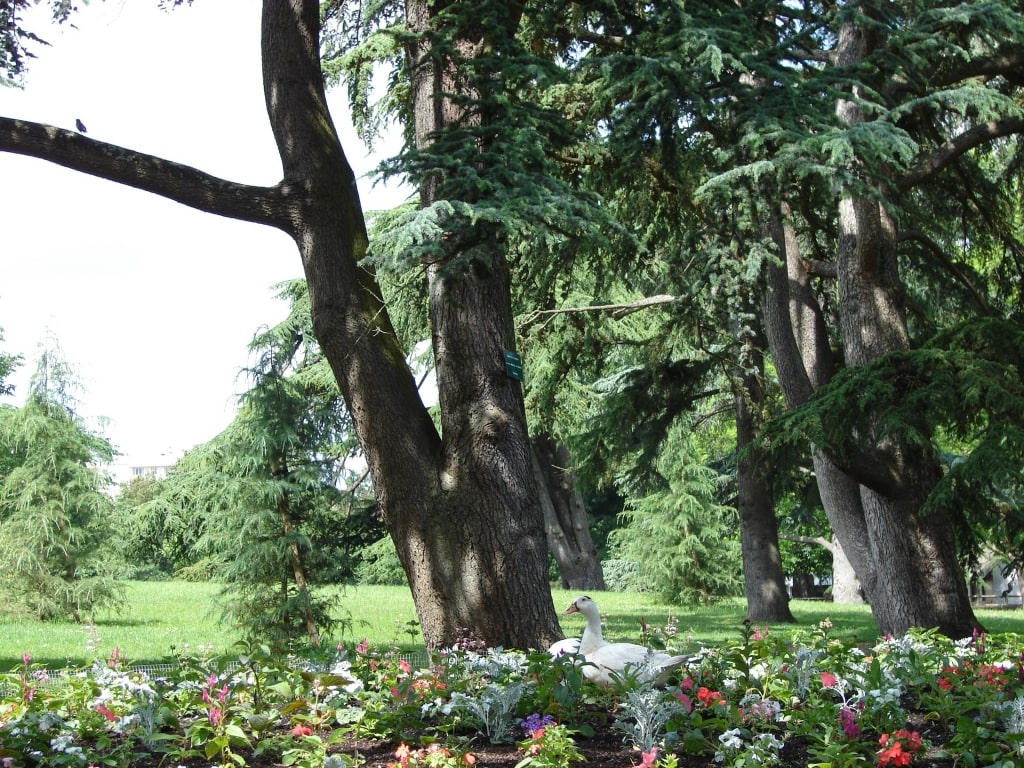
Parc Bordelais Photo by M.Strīķis on Wikimedia Commons, licensed under CC BY-SA 3.0
Bordeaux’s historic area is amazing, but in the height of season, it can be incredibly busy. If mingling with crowds doesn’t appeal, Parc Bordelais offers excellent respite.
Located between Boulevard du President Wilson and the A630 ring roads, it was originally landscaped in 1888 by Eugène Bühler. who took inspiration from the parks of Paris to construct what the park’s motto calls “some countryside for city folk”.
Covering more than 70 acres (which makes it Bordeaux’s largest green space) and home to some 3,000 trees, the park is now adored by people of all ages thanks to its jogging paths, lakes, rivers, kids’ play areas and a small urban farm.
The park is also home to several statues of famous locals, as well as a small train that takes visitors on a trip around the periphery.
See the Majestic Columns of the Grand-Théâtre

Grand-Théâtre
Bordeaux’s Grand-Théâtre is regarded as one of the most beautiful opera houses in the world. It was designed by renowned architect Victor Louis in the neoclassical style and inaugurated in 1780, its colonnaded façade quickly becoming one of the symbols of the city.
Look above the 12 Corinthian-style columns to spot 12 statues representing the nine muses and three goddesses (Juno, Venus, and Minerva), a lovely nod to the classics.
The spectacular interior can be visited on tours during the daytime when there is no performance in summer, allowing visitors to get up close to the grand interior staircase. Look at the ceiling fresco by Jean-Baptiste-Claude Robin that pays homage to the arts, and what is said to be the largest orchestra pit in Europe.
Marvel at Art in the Bassins des Lumières

Bassins des Lumières Photo by Immersivearteditor on Wikimedia Commons, licensed under CC BY-SA 4.0
There can be few buildings in the world that have had such a turnaround in usage than the Bassins des Lumières.
This was in the early 1940s by German occupying powers to help house, protect, and repair up to 30 Italian submarines and German U-boats patrolling the south Atlantic. Now, though, it’s a magnificent arts space with contemporary installations and exhibitions.
The Bassins des Lumières is set around pens 1 to 4 of the former base, with each basin some 36 feet deep, 350 feet long, and 66 feet wide. The dark atmosphere of the spaces formerly used to house these weapons of destruction has now been replaced with intricate wall art and impressive and immersive sound and light shows.
Hang Out at Darwin Eco-système

Darwin Eco-système Photo by Jefunky on Wikimedia Commons, licensed under CC BY-SA 4.0
Another leftfield choice in Bordeaux is also housed in a building radically changed from its original use. Set on the right bank close to the Botanical Gardens, this former military barracks is now home to an alternative community of artists, skaters, musicians, and eco-entrepreneurs.
In a village-like atmosphere, the building and its surroundings have been converted into a living and breathing arts and culture space.
Sections include a skate park with space for 300 skateboarders, a huge vintage clothes store, an eco-farm with an associated marketplace, and Europe’s largest organic bistro-dining hall. You’ll also find various shops and entertainment spaces here.
Imagine Life as a Gladiator at Palais Gallien
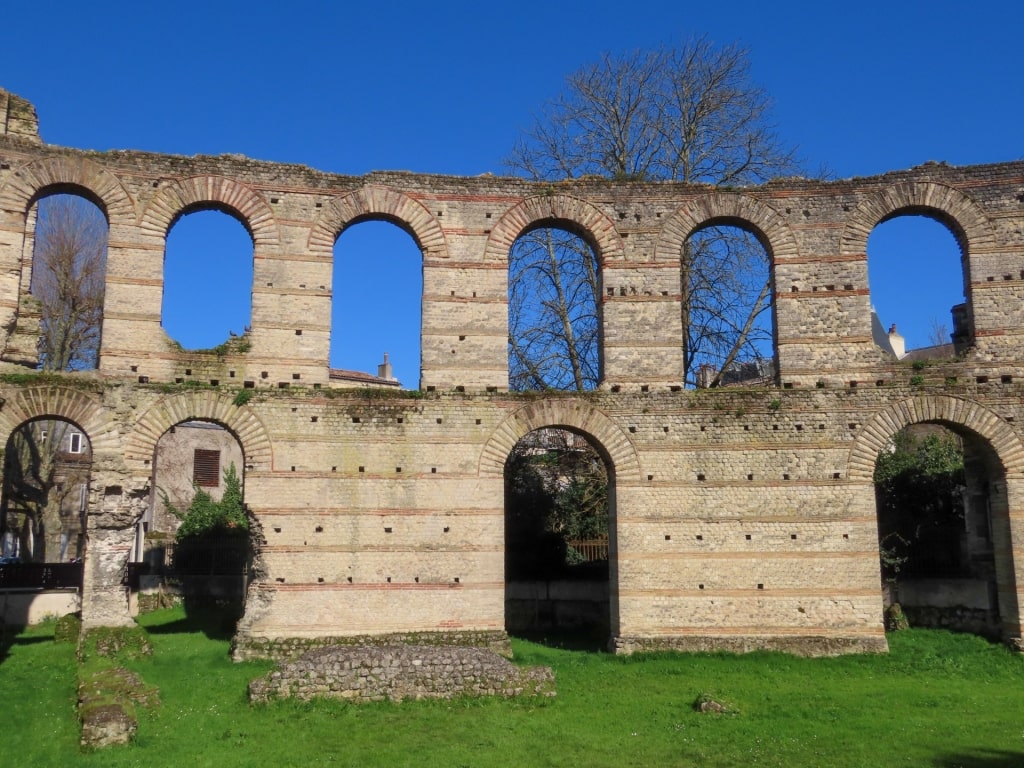
Palais Gallien Photo by Pierre Baudier on Wikimedia Commons, licensed under CC BY-SA 4.0
During the years of Roman rule from around 60 BC until the fall of the Empire in the fifth century, Bordeaux was an important center for lead and tin, a status that led to the building of an amphitheater that at its height could entertain up to 20,000 people.
While there are precious few signs of the Roman era left in the city, the ruins of that amphitheater remain at this spot northwest of the city center.
Featuring a magnificent arched entrance and walls of stone and marble (some of which have been absorbed into surrounding buildings) it offers a glimpse into what life may have been like in Roman times. A multimedia center brings to life the stories of those who fought and fell here in the name of entertainment.
Visit the Heart of Bordeaux at Place Gambetta
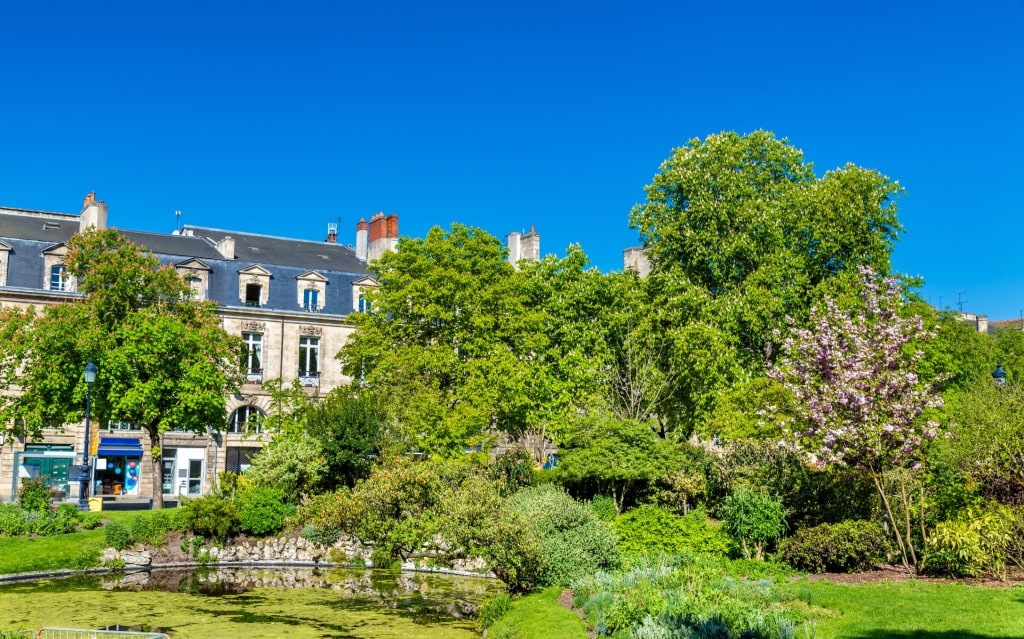
Place Gambetta
While historic Old Bordeaux may be the city’s most visited location, the official heart of Bordeaux lies to the northwest, outside what would have been the old city walls.
Designed by the architect André Portier and completed in 1770, Place Gambetta is a handsome garden square, its surrounding streets lined with elegant, low-rise 18th and 19th-century buildings. This is the perfect location for an early afternoon stroll.
Pause a while outside the building at number 10. The milestone here is the official center of the city from which all distances are measured.
While there’s a bucolic air to the neighborhood today, it was not always this pretty; during the French Revolution, the square also served as the location of the city’s guillotine.
Stop for Coffee at Cap Sciences
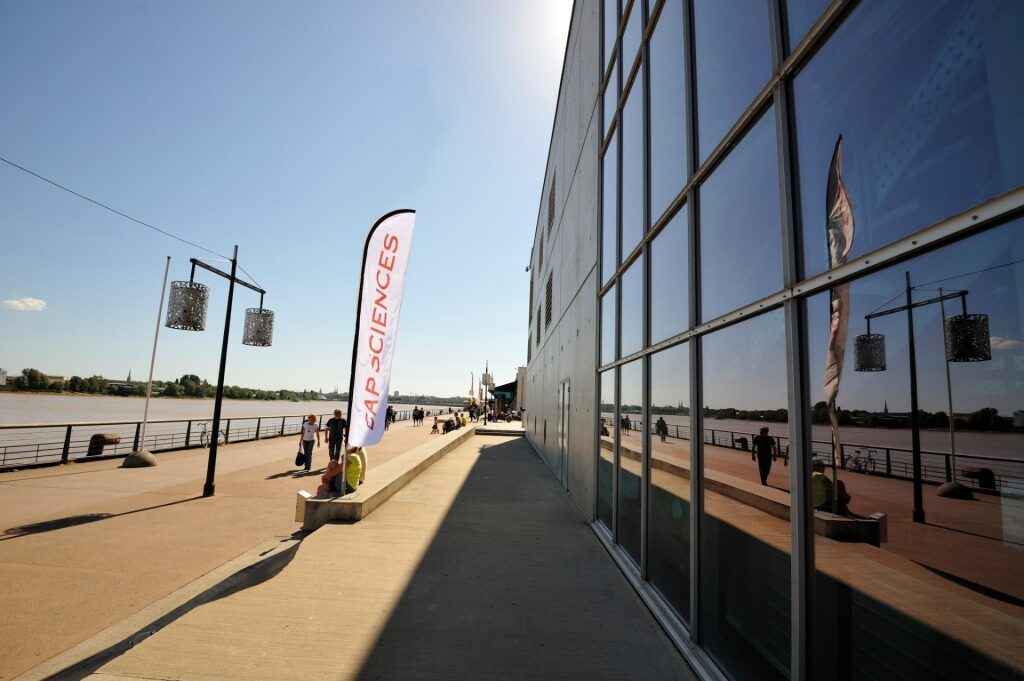
Cap Sciences Photo by Pierre Baudier on Wikimedia Commons, licensed under CC BY-SA 4.0
Many of Bordeaux’s main sights look to the city’s past for their inspiration, but not Cap Sciences, a science museum housed in an old warehouse on the Left Bank and by the engineering marvel that is the Pont Jacques Chaban Delmas bridge.
Inside what was formerly the port’s Hangar 20, there are all manner of interesting science-based exhibitions, activities, events, conferences, and tours. Perhaps best of all, this is home to one of the city’s best café locations.
The Café des Sciences on the building’s second floor features floor-to-ceiling windows with incredible views over the port area and the bridge below. On warmer days, there’s also the option of sitting on a river-facing terrace.
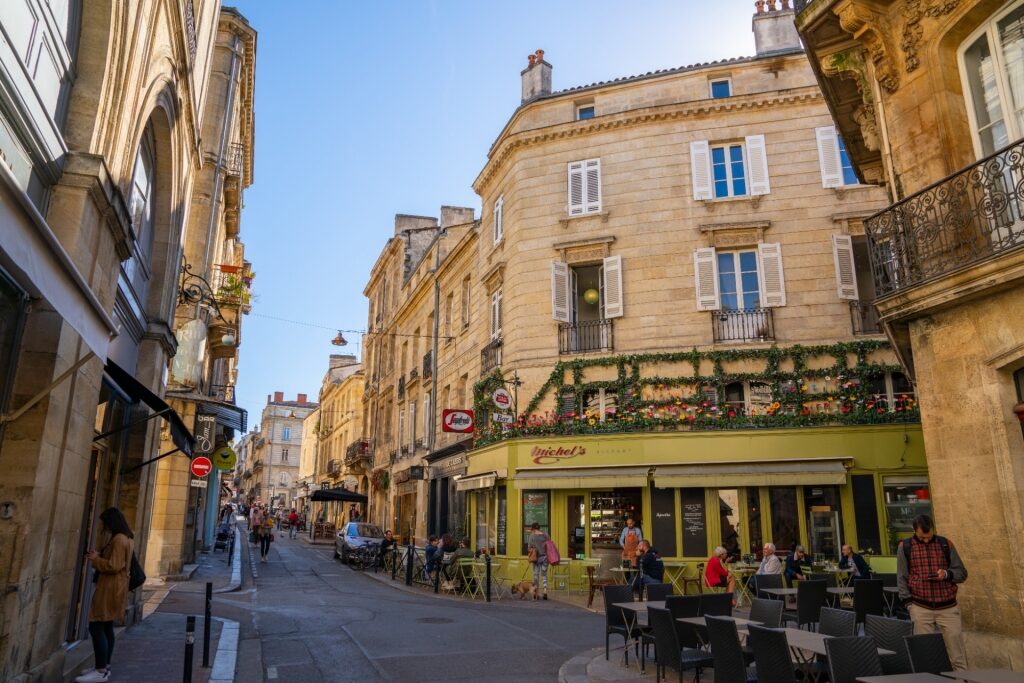
Bordeaux
If you’re looking for a vacation rich in art, culture, wine, and gastronomy, explore Celebrity’s cruises to Bordeaux to visit historic cities, seaside towns, and countryside attractions.



